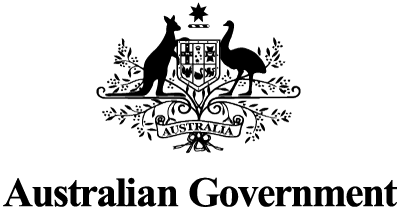We aim to provide documents in an accessible format. If you're having problems using a document with your accessibility tools, please contact us for help.
On 28 July 2023, the Food Ministers’ Meeting endorsed changes to better recognise Indigenous peoples and culture as part of the food system.
Our vision – A world-class collaborative food regulatory system focused on improving and protecting public health and safety.
Our future – The food sector is rapidly changing, consumer expectations of food are changing and we face a range of challenges and opportunities relating to:
- evolving science and new technologies, some with implications for food safety and changes to the way foods are offered to consumers
- poor nutrition and obesity continuing to impact on public health
- increasing use of digital tools providing visibility of supply chains from their point of origin through to the consumer
- responding to consumer expectations for improved product quality, environmental sustainability and ethical production
- ongoing changes to international trade relationships.
Our aims – The aims of the collaborative system were updated in 2017 and remain fit for purpose. Our high‐level aims are to:
- protect the health and safety of consumers by reducing risks related to food
- enable consumers to make informed choices about food by ensuring that they have sufficient information and by preventing them from being misled
- support public health objectives by promoting healthy food choices, maintaining and enhancing the nutritional qualities of food and responding to specific public health issues
- enable the existence of a strong, sustainable food industry to assist in achieving a diverse, affordable food supply and for the general economic benefit of Australia and New Zealand
- provide an inclusive food regulatory system that includes Indigenous foods to improve the wellbeing of Indigenous populations.
We are well‐placed to meet the challenges of the future because we have:
- a strong legislative framework
- engaged and passionate stakeholders
- robust, evidence‐based standards
- a collaborative approach
- consumer confidence and a strong international reputation.
While our foundations are strong, we need to make changes to future proof the system and continuously improve. We will make changes to:
- improve the responsiveness of the system
- enable better resolution of issues that are not strictly food safety issues and impact other portfolios
- make the system easier for stakeholders to understand
- expand the range of tools available to regulators and enable more risk‐proportionate approaches
- ensure we have the right regulatory and non‐regulatory tools to respond to the changing food system.
We will make the changes:
- in partnership with stakeholders
- informed by evidence
- in a considered and planned way.
Collaborative engagement is vital to navigating change, recognising there may not always be agreement.
Aspirations – The following aspirations will guide the future of the collaborative system and will be implemented through a number of different initiatives.
- Strong leadership and effective partnerships.
Actions:- Establish efficient mechanisms to support Food Ministers to take a lead role in stewarding the system and resolving challenging policy issues (in collaboration with other government agencies, regulatory systems, policies and initiatives) to drive improvements to the system and achieve whole‐of‐government outcomes.
- Responsive, transparent decision-making.
Actions:- Establish governance arrangements that enable effective and proportionate decision‐making across all aspects of the system.
- Improve the way decisions and outcomes are communicated.
- Informed, engaged and accountable stakeholders.
Actions:- Investigate pathways for collaborative stakeholder engagement to better enable expert advice to guide the system.
- Develop an effective system to proactively communicate advice to stakeholders, including to build greater understanding of the food regulatory system (amongst industry and consumers) and raise awareness of the responsibilities of key players in food safety.
- Proportionate and effective responses to policy and compliance issues.
Actions:- Embed a safe and healthy food culture across the supply chain.
- Explore opportunities for adopting non‐regulatory or co‐regulatory approaches to achieve system aims (where this is appropriate and with oversight from government).
- Identify ways that technology and innovation can be harnessed to support system aims.
- Clear and consistently implemented food regulation.
Actions:-
Implement an effective regulatory delivery model to improve consistency.
-
Review and increase clarity of food standards.
-
Enhance the way inconsistency is resolved.
-
- Continuous improvement of the system.
Actions:- Establish mechanisms to enable horizon scanning, risk analysis and emerging issues to better anticipate trends and influence future activities (such as reviews of food standards, policy development, setting strategic directions and priorities).
- Proactively monitor and regularly review the performance of all aspects of the system to drive continuous improvement.


